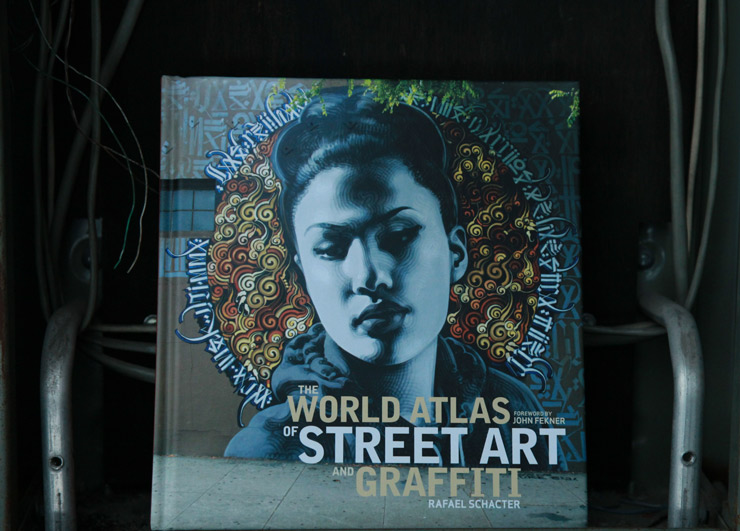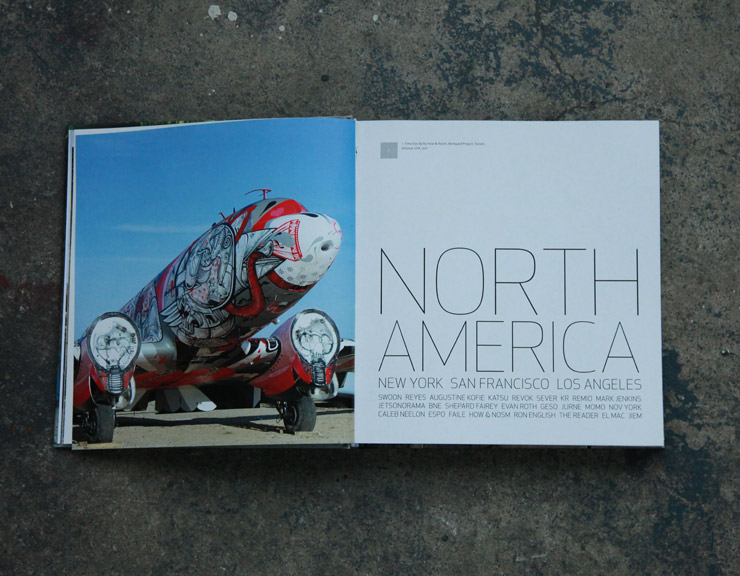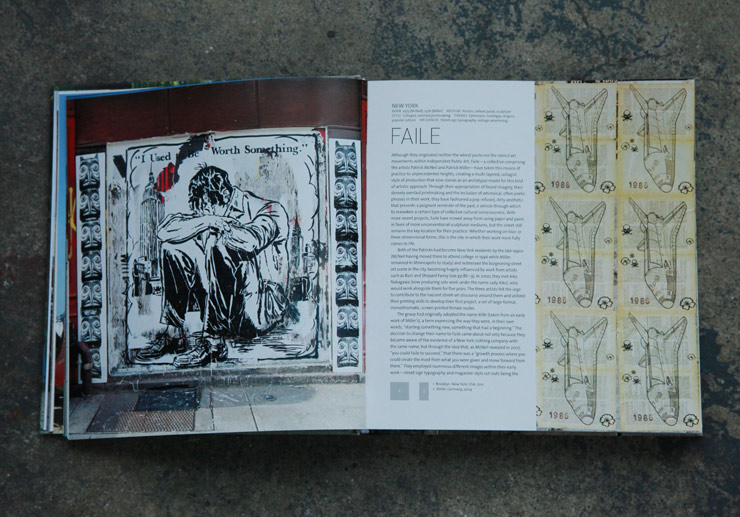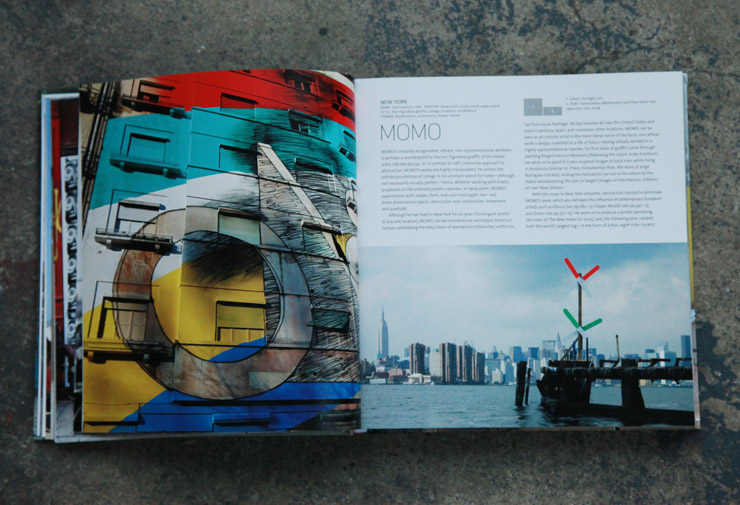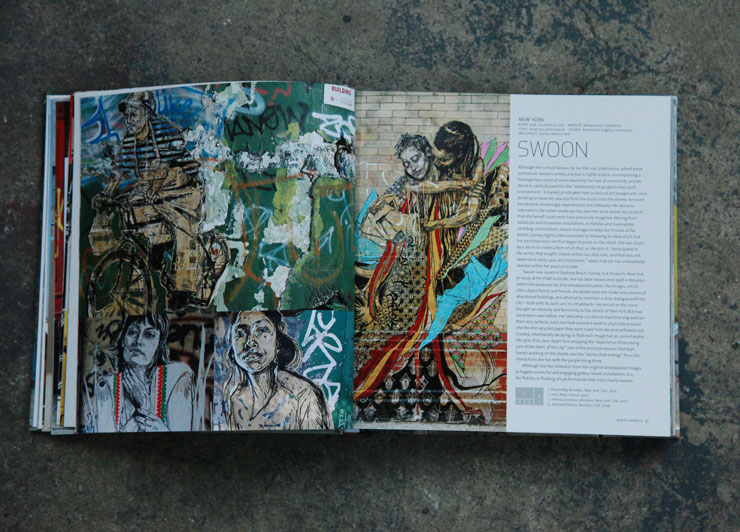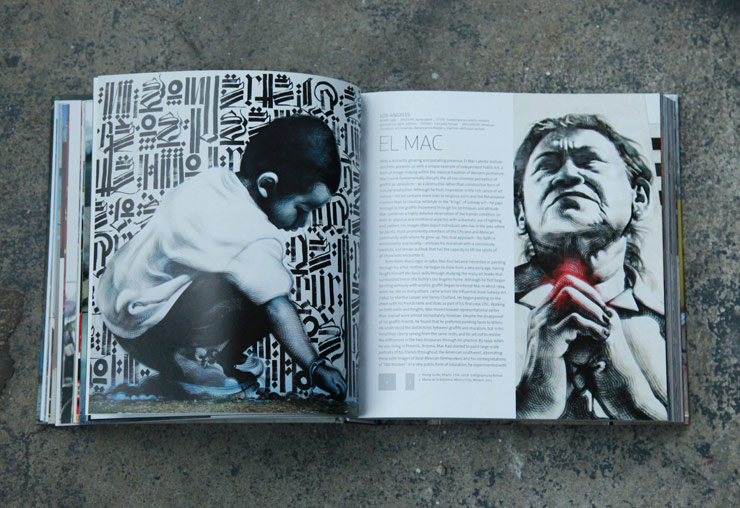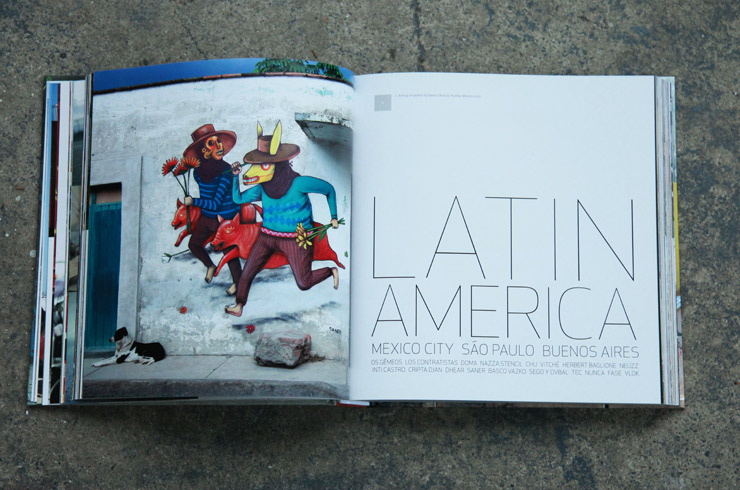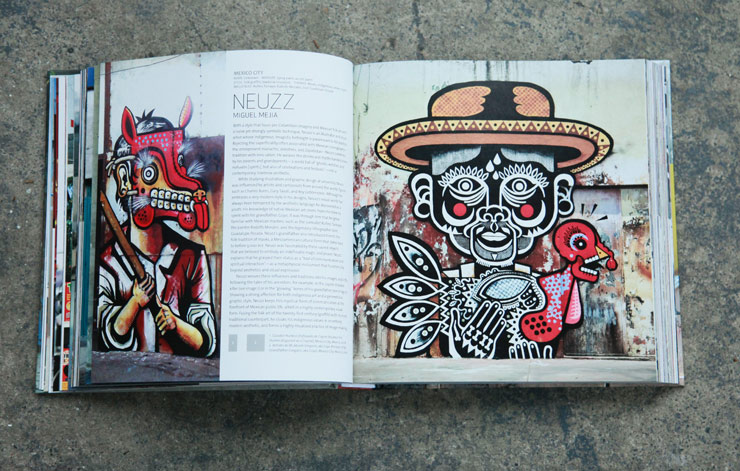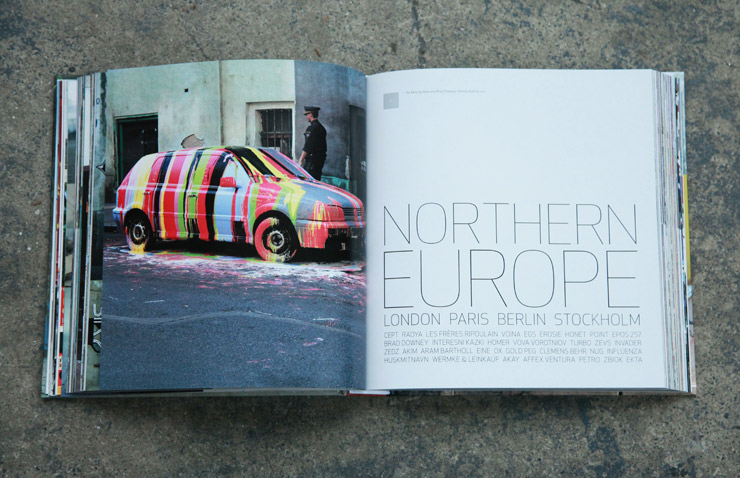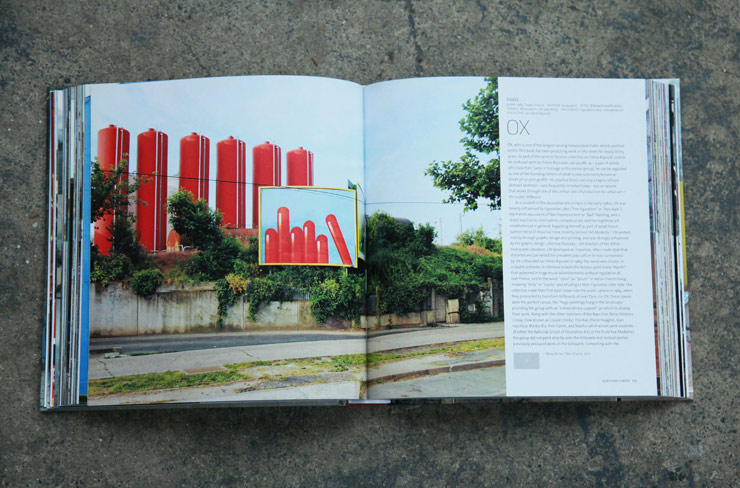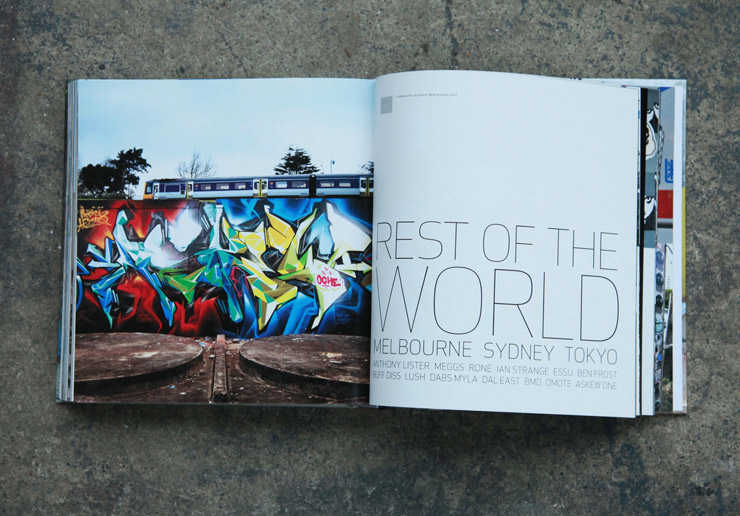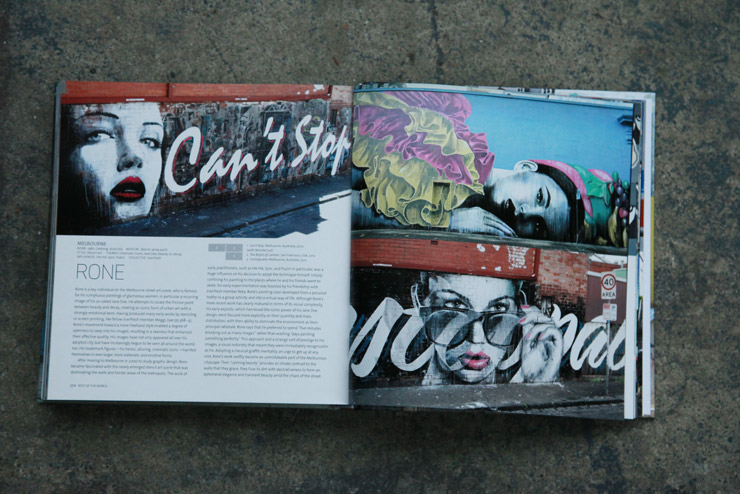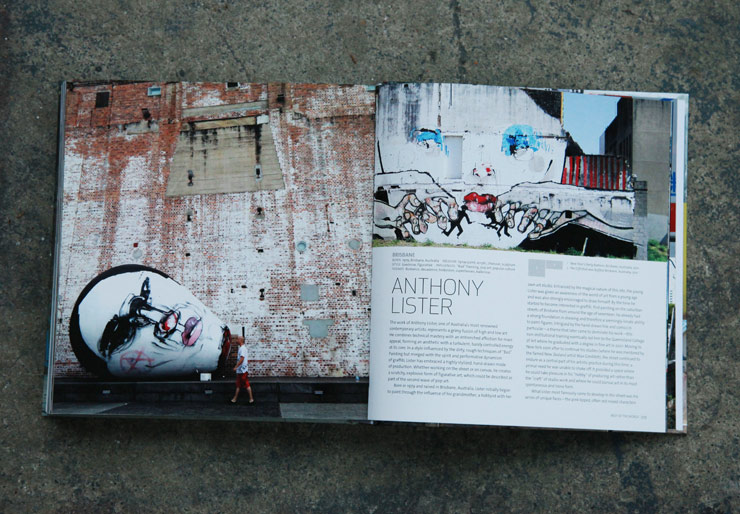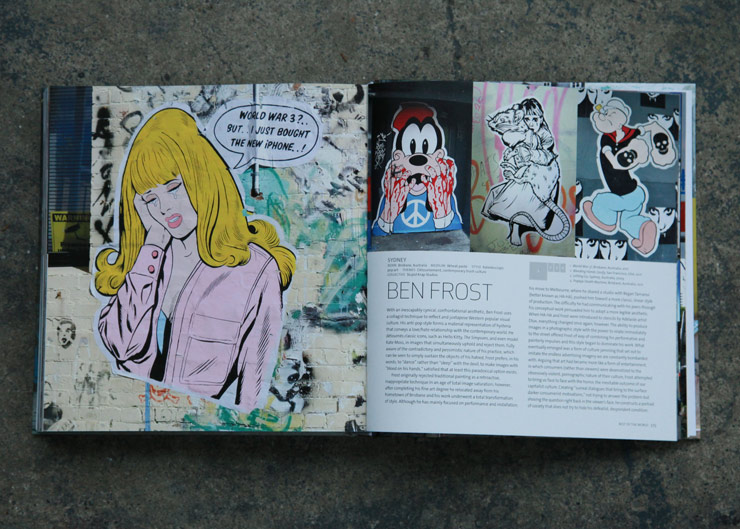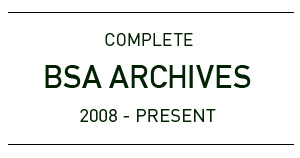As we endure our one billionth snowstorm this winter we continue to paw through the stack of beautiful Street Art, graffiti, public art, and urban art books that we are honored to receive through the mail, and today we’re taken by The World Atlas of Street Art and Graffiti by Rafael Schacter, with foreword by John Fekner.
Rafael Schacter “The World Atlas of Street Art and Graffiti”
The substantial hardcover from Yale University Press is a very solid survey of largely undisputed practitioners of Street Art world wide as well as a number of lesser known names, accompanied by succinct and accurate overviews of their individual influences and styles. With contributors that include a good balance of graffiti artists, street artists, academics, authors, graphic designers, writers, and aestheticians of various stripes, Rafael Schacter has done his research; presenting 113 artists from 25 countries with illustrative photography and examples.
Aside from the thankless task of the editing of candidates that will necessarily leave out hundreds of great artists, Schacter endeavors to present a good cross-section, something that represents the scope of the “independent public art” that has now lifted the oeuvre to global recognition along with historical context and without the narrowly pinched European academic need to effect sanctimonious pronouncements or subtly derisive classist views upon it.
Rafael Schacter “The World Atlas of Street Art and Graffiti”
“Indeed, there are as many different motivations, styles, and approaches within this artistic arena as there are practitioners themselves – a ‘street art’ for every street artist, a ‘graffiti’ for every graffiti writer,” says Schacter in his introduction, and his appreciation for the fundamentals of a self-determination philosophy toward the act of creative expression permeates the descriptions and analysis while gaining your respect for his adept characterizations.
We gratefully acknowledge his help in trying to categorize and describe the enormous varieties of styles, practices and influences at play today, a quickly sampling of which includes for example abstractionist, absurdist, anti-aestheticism, character based, classic graffiti lettering, collage, conceptual, contemporary, culture jamming, decontextualization, decorative, digital/geek, figurative, folk, geometric, graphic design, illustration, indigenous, installation based, interventionist, naïve, performance, photo realistic, photographic, sculptural, surrealist, symbolic, and typographic.
Rafael Schacter “The World Atlas of Street Art and Graffiti”
With a brilliant and personal foreword by conceptual text-based and multimedia artist John Fekner, a veteran of the art-in-the-streets practice that predates the birth of many of the artists in the book, we get a scene-setting update on what collectively is evolving as well as an insight into what is feeding the explosive growth. “For the first time in history, artists who are creating art away from the major centers of art and culture are no longer at a disadvantage. The Internet has increased accessibility through the proliferation of blogs and social media, which has fueled hordes of dedicated fan bases using cell phones and cameras to instantly record, document, and post their interpretations of life, culture, and art online,” Fekner writes.
With a well-rounded atlas like this at hand the student, scholar, and fan can gain a greater understanding of the guys and girls that paint messages in the street as well as an appreciation for their minds and craft.
Rafael Schacter “The World Atlas of Street Art and Graffiti”
Rafael Schacter “The World Atlas of Street Art and Graffiti”
Rafael Schacter “The World Atlas of Street Art and Graffiti”
Rafael Schacter “The World Atlas of Street Art and Graffiti”
Rafael Schacter “The World Atlas of Street Art and Graffiti”
Rafael Schacter “The World Atlas of Street Art and Graffiti”
Rafael Schacter “The World Atlas of Street Art and Graffiti”
Rafael Schacter “The World Atlas of Street Art and Graffiti”
Rafael Schacter “The World Atlas of Street Art and Graffiti”
Rafael Schacter “The World Atlas of Street Art and Graffiti”
Rafael Schacter “The World Atlas of Street Art and Graffiti”
Rafael Schacter “The World Atlas of Street Art and Graffiti”
Rafael Schacter “The World Atlas of Street Art and Graffiti”
<<>>><><<>BSA<<>>><<<>><><BSA<<>>><><<>BSA<<>>><<<>><><BSA Please note: All content including images and text are © BrooklynStreetArt.com, unless otherwise noted. We like sharing BSA content for non-commercial purposes as long as you credit the photographer(s) and BSA, include a link to the original article URL and do not remove the photographer’s name from the .jpg file. Otherwise, please refrain from re-posting. Thanks! <<>>><><<>BSA<<>>><<<>><><BSA<<>>><><<>BSA<<>>><<<>><><BSA
Other Articles You May Like from BSA:
Here is the first public look at the new print by Tavar Zawacki (aka Above) which he made especially to aid the programs in Haiti and Braddock, Pennsylvania for Heliotrope Prints. The limited run pr...
Enough with all these damn murals! ELFO. MORTE AL L' ESTETICA!!! Florence, Italy. (photo Grabriele Masi) Enough with these figurative studies, these needless sucklings of the romantic ego, the...
If you are not going into the museum to see art, Julien De Casabianca is happy to bring it out to the street for you. Additionally, if the museum has been closed by an earthquake, he’ll make sure the ...
An essential element of creating works on the street or in the public sphere is having the latitude to discover and experiment. Here on Utsira Island in Norway the Street Art brothers Icy & Sot ha...
In the last week, we’ve marked the first anniversary of the war now taking place in Ukraine with an installation by exiled Ukrainian street artist/muralist Waone in New York and exiled Russian artist...
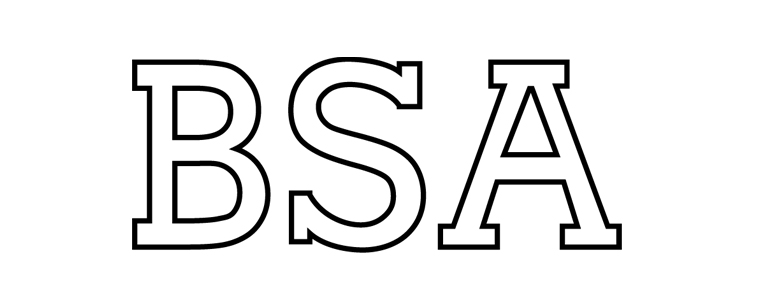 BROOKLYN STREET ART LOVES YOU MORE EVERY DAY
BROOKLYN STREET ART LOVES YOU MORE EVERY DAY